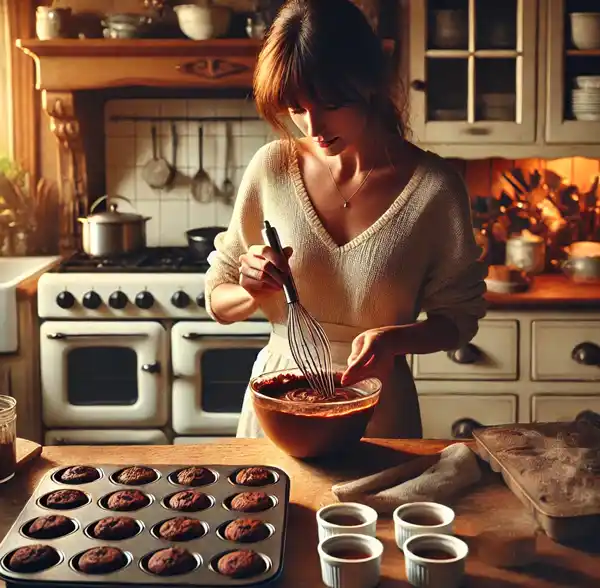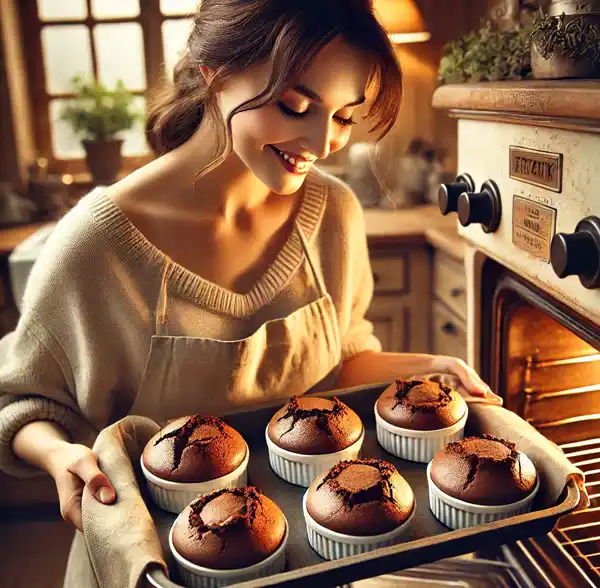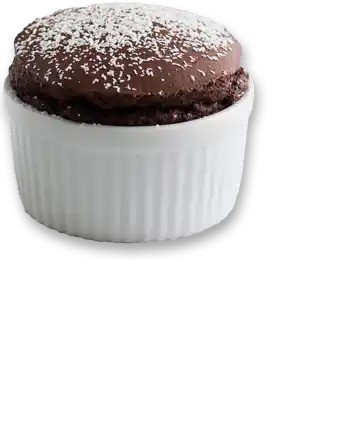A Celebration of Fluffy, Chocolatey Perfection
Every February 28th, dessert lovers everywhere unite to honor one of the most indulgent and sophisticated treats to ever grace a ramekin: the chocolate soufflé. National Chocolate Soufflé Day is a time to revel in the magic of this airy, decadent dessert that has tantalized taste buds for centuries. But what makes a soufflé so special? Why does it have such a reputation for being both heavenly and intimidating? Let's take a deep dive into the history, science, and sheer deliciousness of chocolate soufflés.

A Brief History of the Chocolate Soufflé
The soufflé, whose name comes from the French word souffler, meaning "to blow" or "to puff up," has been wowing dessert enthusiasts since the 18th century. The earliest known mention of soufflés appears in the writings of French master chef Vincent La Chapelle, who served European aristocrats with his delicately puffed culinary creations.
But it wasn’t until Marie-Antoine Carême, the legendary 19th-century French chef and architect of haute cuisine, refined the soufflé technique that it became a true culinary art form. Carême, often called "the king of chefs and the chef of kings," elevated the dish from simple baked eggs to the delicate, airy masterpiece we know today. He introduced precise baking techniques and the use of individual ramekins, which allowed for better consistency and presentation. His work transformed the soufflé into a dish that wasn’t just a food but an experience—an ephemeral, delicate, and elegant treat meant to be eaten at the exact moment of perfection.
Of course, back in the day, achieving a perfect soufflé was much trickier without modern ovens and kitchen gadgets. We can only imagine the heartbreak of aristocrats watching their soufflés collapse due to a rogue breeze or a misplaced sneeze. The soufflé quickly became a symbol of culinary skill, as only the most talented chefs could achieve the elusive, towering rise without watching it deflate in defeat.
The Science Behind a Perfect Soufflé
What makes a soufflé rise to greatness? It all comes down to egg whites, air, and a touch of patience. When egg whites are whipped, they create a foam of tiny air bubbles that expand when exposed to heat, causing the soufflé to rise. The secret to achieving that cloud-like texture lies in the perfect balance between structure and fluffiness.
Temperature also plays a crucial role. A properly preheated oven allows the soufflé to rise evenly while maintaining the delicate structure inside. If the oven is too hot, the soufflé can over-expand and collapse. If it’s too cool, it won’t rise at all. Timing is everything!
Another key factor is folding. The whipped egg whites must be carefully folded into the batter, preserving the air bubbles while ensuring an even mix. Over-mixing will knock out too much air, leading to a dense soufflé, while under-mixing can leave streaks of egg whites, resulting in an uneven rise.
Too much mixing? Your soufflé turns dense. Too little? Say goodbye to that dramatic rise. It’s a dessert that demands respect, skill, and perhaps a few practice rounds before a dinner party (unless you enjoy being known as "the person whose soufflé flopped spectacularly").
 How to Celebrate National Chocolate Soufflé Day
How to Celebrate National Chocolate Soufflé Day
National Chocolate Soufflé Day is the perfect excuse to dive into the world of culinary decadence. Whether you’re an aspiring pastry chef or just someone who enjoys chocolate, there are plenty of ways to make this day special.
Whether you're an expert baker or a first-time soufflé maker, there are plenty of ways to honor this decadent day:
Bake Your Own Soufflé – Challenge yourself to make a homemade chocolate soufflé. Just remember: no slamming doors in the kitchen!
Try a Soufflé at a Fancy Restaurant – If baking one sounds too stressful, let the professionals handle it. Find a local restaurant known for its soufflés and indulge.
Experiment with Flavors – While chocolate is the star today, why not try a twist? Add espresso, orange zest, or even chili powder for a unique spin.
Throw a Soufflé Tasting Party – Invite friends and have a soufflé showdown. Extra points for dramatic soufflé presentation and suspenseful oven-watching.
Fun Facts About Chocolate Soufflés
The soufflé may be a dish of delicate elegance, but there are plenty of quirky and fascinating facts about this legendary dessert. From its rise (and fall) to its status as a culinary challenge, soufflés have a rich history that extends beyond their fluffy tops.
- Timing is Everything – A soufflé waits for no one! It begins deflating the moment it leaves the oven, so if you're planning an Instagram-worthy moment, be quick!
- The Soufflé Challenge – Many cooking competitions test contestants with soufflés because they demand precision, technique, and nerves of steel.
- A Culinary Status Symbol – In the 1800s, serving a perfect soufflé was a sign of culinary excellence and sophistication. Messing one up, however, could ruin your reputation at high-society dinners.
- Chocolate Makes Everything Better – The first soufflés were mostly savory (think cheese and vegetables), but when chocolate got involved, it became the legendary dessert we celebrate today.
- A Soufflé by Any Other Name – Did you know that soufflé-inspired dishes exist in many cultures? From Japan’s airy cheesecakes to Italy’s semifreddo, the concept of whipped, airy desserts extends far beyond France.
National Chocolate Soufflé Day is more than just an excuse to eat dessert—it’s a day to appreciate the art and science behind one of the world’s most elegant treats. Whether you're savoring a perfectly puffed soufflé at a fine dining establishment or attempting to bake one yourself (and hoping for the best), this day is all about indulging in chocolatey goodness.
So go ahead, grab a spoon, and dig into the magic of soufflés—just don’t forget to eat it fast before it deflates!
Please Share our Content







 How to Celebrate National Chocolate Soufflé Day
How to Celebrate National Chocolate Soufflé Day








 "Sláinte!" is a traditional Irish expression used as a toast, equivalent to "Cheers!" in English.
"Sláinte!" is a traditional Irish expression used as a toast, equivalent to "Cheers!" in English.